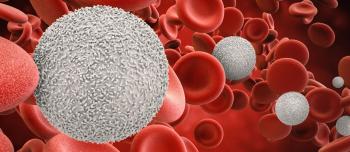In September, investigators from the Yale School of Medicine (YSM) revealed the discovery of a new animal model for future hemophilia A research—lab rats. The lead investigator of the study was Carmen Jane Booth, DVM, PhD, assistant professor of comparative medicine and co-director of Mouse Research Pathology at YSM.
Booth and her colleagues made their discovery among a previously healthy colony of inbred lab rats that began showing symptoms of hemophilia, including bruising, prolonged bleeding from minor wounds and swollen joints. Once environmental factors were ruled out, the researchers suspected an inherited bleeding disorder. They sequenced the rats’ DNA and found a mutation similar to the one responsible for hemophilia A in humans. Additional tests confirmed that the rats had decreased levels of factor VIII, consistent with a diagnosis of hemophilia. “When we discovered that I was like a kid in a candy shop,” Booth said.
Other animals used as test subjects for hemophilia research have limitations--mice are too small for some studies and dogs are too expensive, concluded the authors. Ethical considerations associated with using dogs can also be a potential obstacle. In contrast, rats could make ideal subjects due to their size, unique genetic mutation and bleeding manifestations.
“First, the location of the mutated gene [for hemophilia A] is different than it is in other animals, so both males and females are affected equally,” said Peter W. Marks, MD, PhD, an associate professor at YSM. “Rats are also a nice size, large enough to test a pump and other treatment methods that wouldn’t quite work on a mouse.”
“Ultimately, we plan to translate this model for use in developing gene therapies and evaluating novel therapeutics for treating people with hemophilia A,” concluded Booth.
The study, “WAG-F8m1Ycb Rats Harboring a Factor VIII Gene Mutation Provide a New Animal Model for Hemophilia A,” was published in the online version of the Journal of Thrombosis and Haemostasis.
Sources: Yale School of Medicine, September 2, 2010, and Yale Daily News, September 8, 2010





